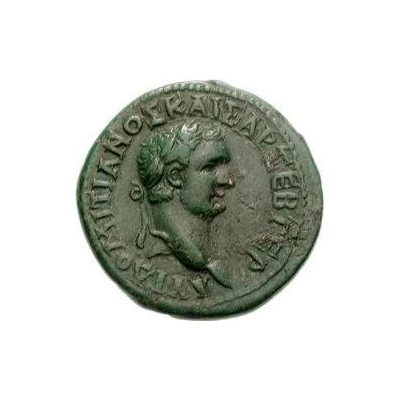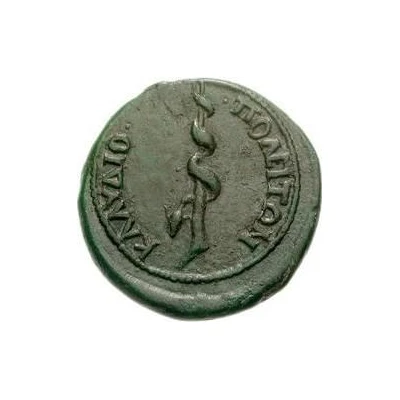


© Classical Numismatic Group, Inc.
Hemiassarion - Domitian ΚΛΑΥΔΙΟΠΟΛΕΙΤΩΝ
| Bronze | 7.64 g | 22 mm |
| Issuer | Bithynium Claudiopolis (Bithynia and Pontus) |
|---|---|
| Emperor | Domitian (Titus Flavius Domitianus) (81-96) |
| Type | Standard circulation coin |
| Years | 81-96 |
| Value | Hemiassarion (0.05) |
| Currency | Drachm |
| Composition | Bronze |
| Weight | 7.64 g |
| Diameter | 22 mm |
| Shape | Round (irregular) |
| Technique | Hammered |
| Orientation | Variable alignment ↺ |
| Demonetized | Yes |
| Updated | 2024-10-10 |
| Numista | N#402918 |
|---|---|
| Rarity index | 100% |
Reverse
Serpent coiled round torch.
Script: Greek
Lettering: ΚΛΑΥΔΙΟΠΟΛΕΙΤΩΝ
Interesting fact
The Hemiassarion coin was minted during the reign of Domitian, who was the Roman Emperor from 81 to 96 AD. This coin was used as a standard circulation coin in the Roman Empire during that time. The fact that it was made of bronze and weighed 7.64 grams suggests that it was a relatively small and lightweight coin, which would have been easily accessible to the average person in the empire. Additionally, the coin's design features the image of Domitian, which would have been a symbol of the Roman Empire's power and authority at the time. The coin's minting location, Bithynium Claudiopolis, was an important city in the Roman province of Bithynia and Pontus, which was located in modern-day Turkey. Overall, this coin is an interesting example of the currency used in the Roman Empire during the 1st century AD, and it provides a glimpse into the economic and political systems of the time.